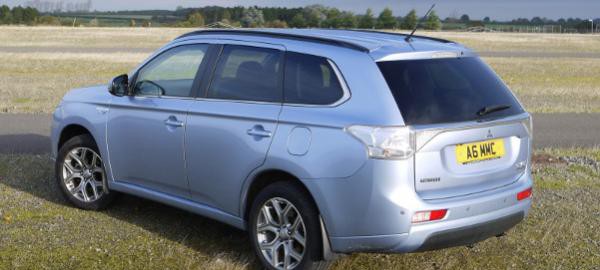I have previously reviewed a diesel-powered Outlander and came away impressed by its family-friendly credentials coupled with go-anywhere capabilities. It was also reasonably frugal for this type of vehicle, returning 40+ mpg over a week of mixed driving – not bad for a seven-seat, off-roader with an automatic gearbox.
On test this week has been the latest version of the Outlander, this time in hybrid-electric form. This technologically advanced vehicle lays claim to being the most fuel efficient SUV on the market and by a country mile.
So how does it work?
Two electric motors drive the front and rear axles independently, with the batteries allowing forward progress at speeds of up to 75mph. Beyond that speed, the 2.0-litre petrol engine will cut in to boost the performance and will also burst into life if the battery pack charge falls to below 30%.
On the move these changes to propulsion are seamless and there are some clever touches allowing you to manually select the method of power.
For example, you might choose to travel on petrol power for the faster part of a journey, saving the battery for urban travel (increasingly useful as more and more towns introduce emissions charges for polluting vehicles).
It is also possible to select a ‘charging mode’ on the move, whereby the petrol engine charges the battery, useful if it has not been possible to plug the car into a charging station.
If this all sounds a little complicated, in practice it is simplicity itself.
At home the car can be plugged into a domestic 13 amp socket for a cheap overnight charge and out and about we are at last seeing an increasing number of charging station springing up across the country.
Mitsubishi suggest that up to 500 miles might be possible on a tank of fuel. I was unable to reach these dizzy heights, but with several long motorway journeys to complete it and no recharging opportunities, it was always going to be a struggle.
Removed from the strains of long distance travel, it was a great joy to complete all my local driving on electric power alone and can imagine petrol free weeks were an Outlander PHEV to permanently grace my driveway.
An added joy when travelling under electric propulsion is the silence. I found I switched the radio off so that I could enjoy a level of hush previously only enjoyed by the owners of super luxury vehicles with large and thirsty petrol engines.
As a driver’s car the Outlander PHEV does not set out to thrill. Initial acceleration is somewhat sluggish, the heavy weight of the large vehicle, electric motors and battery pack taking its toll. Once rolling, things improve remarkably and brisk progress can be made.
Ride comfort is fair and the handling safe and secure. In practice, I found myself adopting a relaxed driving style, which also helped to improve the electric range.
The PHEV unfortunately loses the seven seat option, the space being necessary for the battery pack. However, there is still ample space for five large adults to travel in comfort and there is a plethora of equipment to enjoy, including climate controlled air conditioning, leather seating, touch-screen satellite navigation and alloy wheels.
My test car came in top GX4hs trim, bringing with it a lane departure warning system and adaptive cruise control. The latter was a huge boon on the congested motorway network, allowing a top speed to be set and a safe gap to be maintained at all times with no driver input. It reduces stress immensely and once you learn to trust the system you will wonder how you ever managed without it!
The Outlander range starts at just under £24,000, though with diesel power.
The PHEV range starts at £33,304 and for many it will justify the premium. The low CO2 emissions of 44g/km will favour the company car driver, but for many urban-based SUV owners the PHEV may well make sense, providing they have the facility to charge the car at home.
Other than luxury car manufacturer Tesla, no manufacturer has yet made an all-electric car with a practical everyday range.
For the time being therefore, hybrid power seems to make most sense and Mitsubishi seem to have comprehensively covered all bases with the PHEV.
I liked it a lot!
Source: Yorkshire Times
